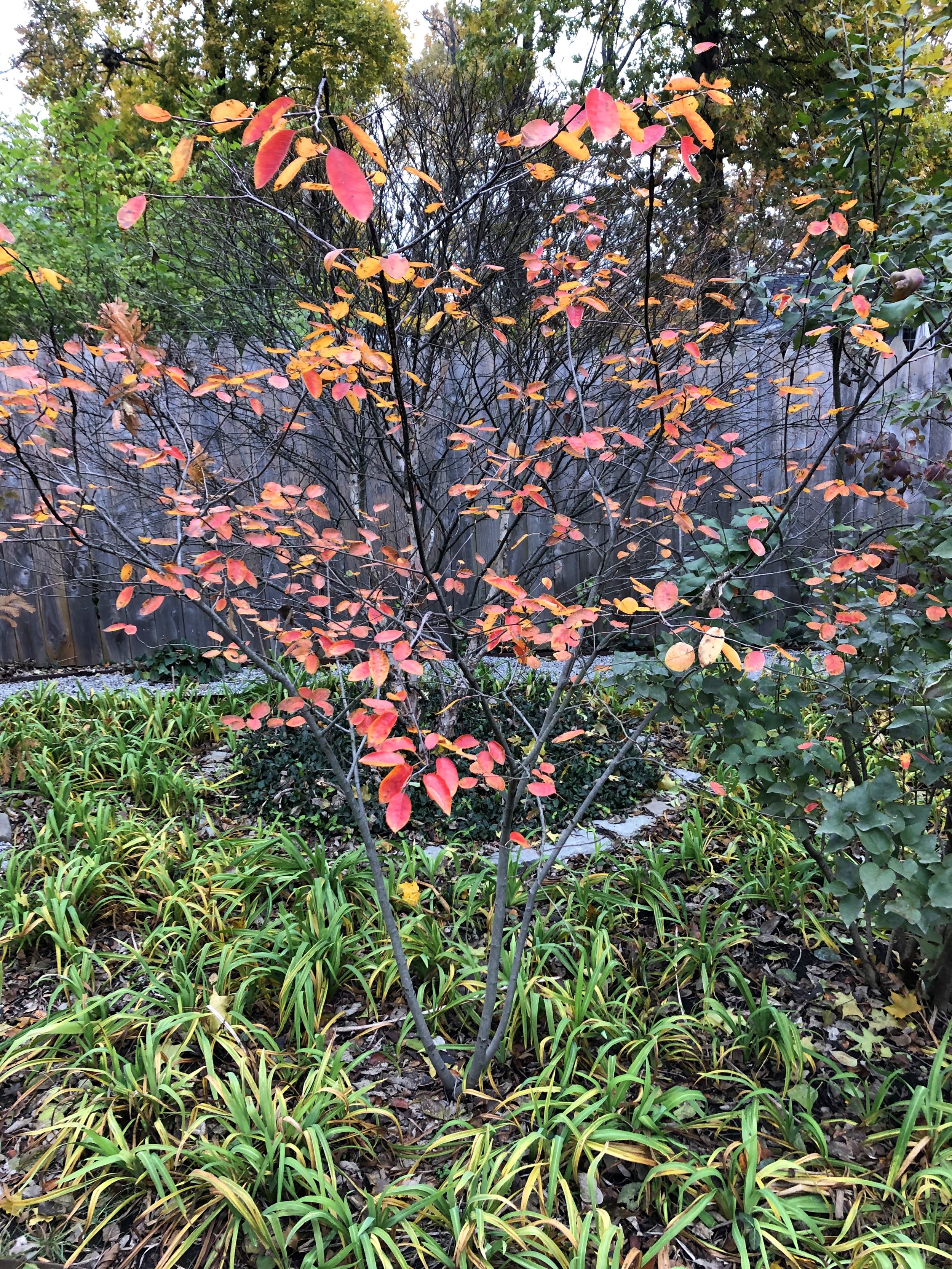Planning for a Fall Color Palette
The Overview
When you think of the Fall, what colors come to mind? For us, it’s orange, yellow, shades of red and yes, even green! If you’re new to your home, enjoy your first Fall observing the change of colors in your area and specifically, around your home. See what colors turn out! The best advice I got when moving into our home was to wait a year and see what comes up. Thanks Lolli! It’s true, once you see what your yard has in store for you, you can plan on filling in gaps, adding color and attending to changes you’d like to make. A Fall color palette is something that requires time and patience. With some long term planning, you can enjoy the fruits of your labor even if it is starting with some saplings to watch grow and become more and more vibrant with each passing year. The time to start planning is now, even if you’re not actually planting. If you’re not planting, you’re planning.
Scarlett / Purple & Copper Tones
Oakleaf Hydrangea
One of my favorite “corner” plants. Beautiful showy white flowers with broad leaves. Excellent for screening purposes in the spring and summer. Gorgeous fall color. In the winter, it has a contorted reddish orange stem and branches that really punch through the snow.
Reds
Japanese Maple
So...many….kinds… Japanese Maples are typically slow growing and prefer shady regions of your yard. Their leaves can come in a wide variety of shapes and colors for the Fall enthusiast. They will provide a nice focal point for your yard, so plant sparingly. They are also expensive and finicky, so be sure to carefully consider where you plant the particular variety that catches your eye.
Burning Bush
This is a perennial favorite. Pun intended. You can even imagine its namesake from the Old Testament if the light is behind one this Fall. Be sure to remove your sandals, but if God starts talking to you, it’s the real deal. Better get ready to lead your people out of Egypt.
Winterberry
Deck the halls! Wait, a deciduous holly? Yes, please. No thorns? Even better. While the leaves are not the color component here, the berries are. Be careful what you wish for though because these plants need a partner. They’re dioecious. Both a male and female plant are necessary to ensure a bright red berry on the female plant in the fall and into winter. Hence the name. The birds will love you for them and we will love you for following this advice. Send us your pics!
Yellows
Ginkgo biloba
A primeval tree that dates to the time of dinosaurs. Another dioecious plant, like the Winterberry. This is very important: BE SURE TO ONLY PLANT THE MALE. Female ginkgos have a fruit that smells like deer droppings. Miami University (OH) found this out the hard way. The yellow fan-like leaf that shows up in the Fall is a thing of beauty!
Shantung Maple
If you don’t want to wait for a Japanese Maple to grow, this variety of Chinese Maple will do. It has a beautiful star-shaped maple leaf that turns a yellowish gold in the Fall.
Oranges
Dawn Redwood
Since the dawn of time, this tree species has existed. Practically. It is of interest because it is a cone bearing plant that is deciduous. It has delicate featherlike leaf-needles that turn a bright orange in the Fall and drop to the ground like confetti. They can also be propagated fairly easily. We especially enjoy the reddish orange bark that runs in vertical strips on these giants. Gorgeous all year round.
Serviceberry
With the Serviceberry, you get a lot of bang for your buck. It has white flowers that look like fireworks frozen in mid-explosion, suspended in the air. The berry, if you can get them before the birds do, is like a blueberry with less tartness. In fact, they were traditionally used to “cut” blueberry pie as a filler. The sparse foliage turns a brilliant orange in the Fall and the slender, silvery branches provide a nice compliment to Winter scenery. They come in a variety of sizes from shrub to tree!
Green
Japanese Black Pine
Green in a garden year round is a must. While you may not typically think of it for Fall colors, the reminder of Spring in the midst of autumn is a nice counterpoint. The growth of this hardy pine is marked by beautiful “candelabra” that form where new growth is occurring. Thinning out the dead needles reveals a unique pom. Clusters of needles call to mind the character of Lumiere in Beauty and the Beast.
Tips & Tricks
Make a map of your yard (front, sides, back). Consider what you have and take pictures. Plan where you want to be. Dream. Repeat.
Consider key views from inside your home. Think of your window as the frame to a painting. Where do you see colors for each season?
Plants grow. Remember to think in terms of both height and width to fill in areas you’d like to compliment one another. Some of the above options can grow upwards of 100 feet.
Don’t forget evergreens! If you’re working with a Japanese theme, the Black Pine is an excellent variety to consider.
Leaf litter. So here’s the pinch: if you plant it, leaves will come. Are you prepared to rake?
Leaf color can vary in intensity from year to year based on a lot of weather related factors. Be patient. When all else fails, blame it on the rain (or lack thereof).



















